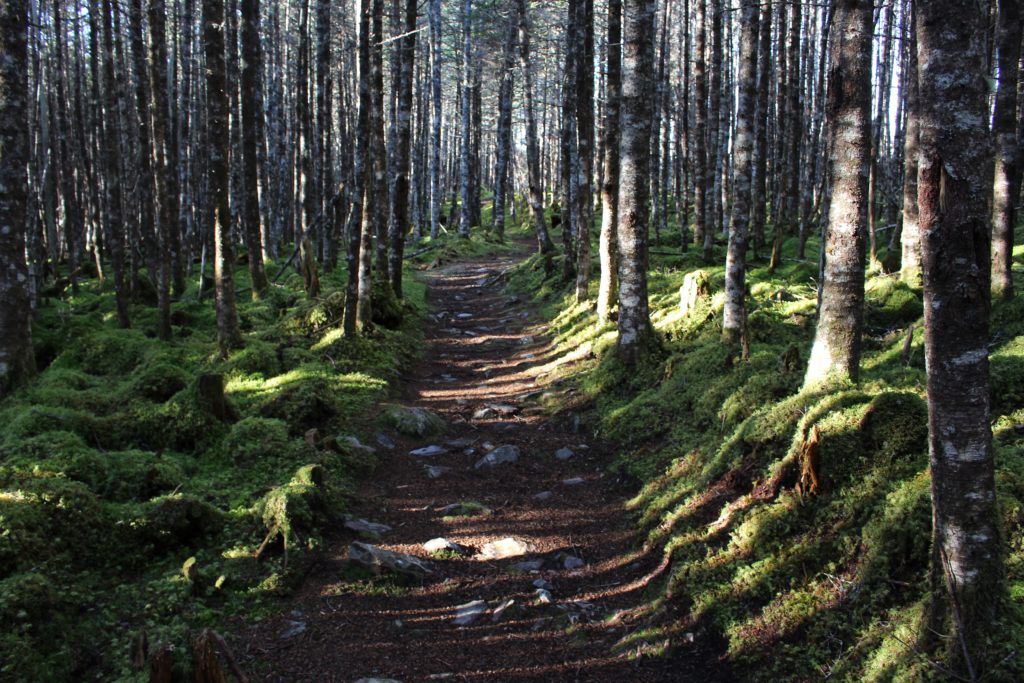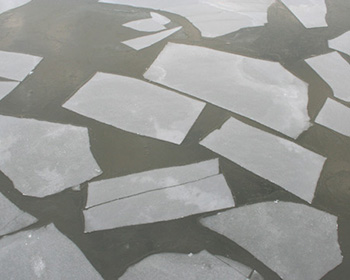Q and A with Artist Emily Pittman
BY NQ
February 2019
Emily Pittman is a visual artist and writer who was born in Clarenville and is now based in St John’s.
She graduated from the University of Guelph in April of 2016 and received an Honours Bachelor of Arts Degree (with Distinction). She was nominated for the BMO 1st Art! Invitational Student Art Competition, and received the University of Guelph Faculty Award for Painting. She recently completed a residency and held a solo exhibition at The Rooms.
NQ visited her at her Water Street studio to ask her a couple of questions.
There’s such a delicate inside-outness to these compositions. Where does that come from?
These I did in a project for the Heritage Foundation of Newfoundland and Labrador. I found the imagery through their bank of historical structures. They have an endless number of images in their archive. I started digging and looking for structures that struck me. And I wanted them to be anonymous but still a bit familiar, like maybe the symmetry is familiar, or the colours are familiar, but I didn’t want it to have any actual indicators of time or place.
And what about the palette?
It’s the Historic Colours of Newfoundland and Labrador that was developed by Templeton’s and the Heritage Foundation. A lot of these colours were present in my work before I did this project, just because those were the colours that I loved using, but this project really helped me understand the colours that I was drawn to and the colours that I’ve been surrounded by since I’ve moved back home. And moving forward it’s helped me be more selective and more knowledgeable about the colour palette that I’ve chosen in my work.
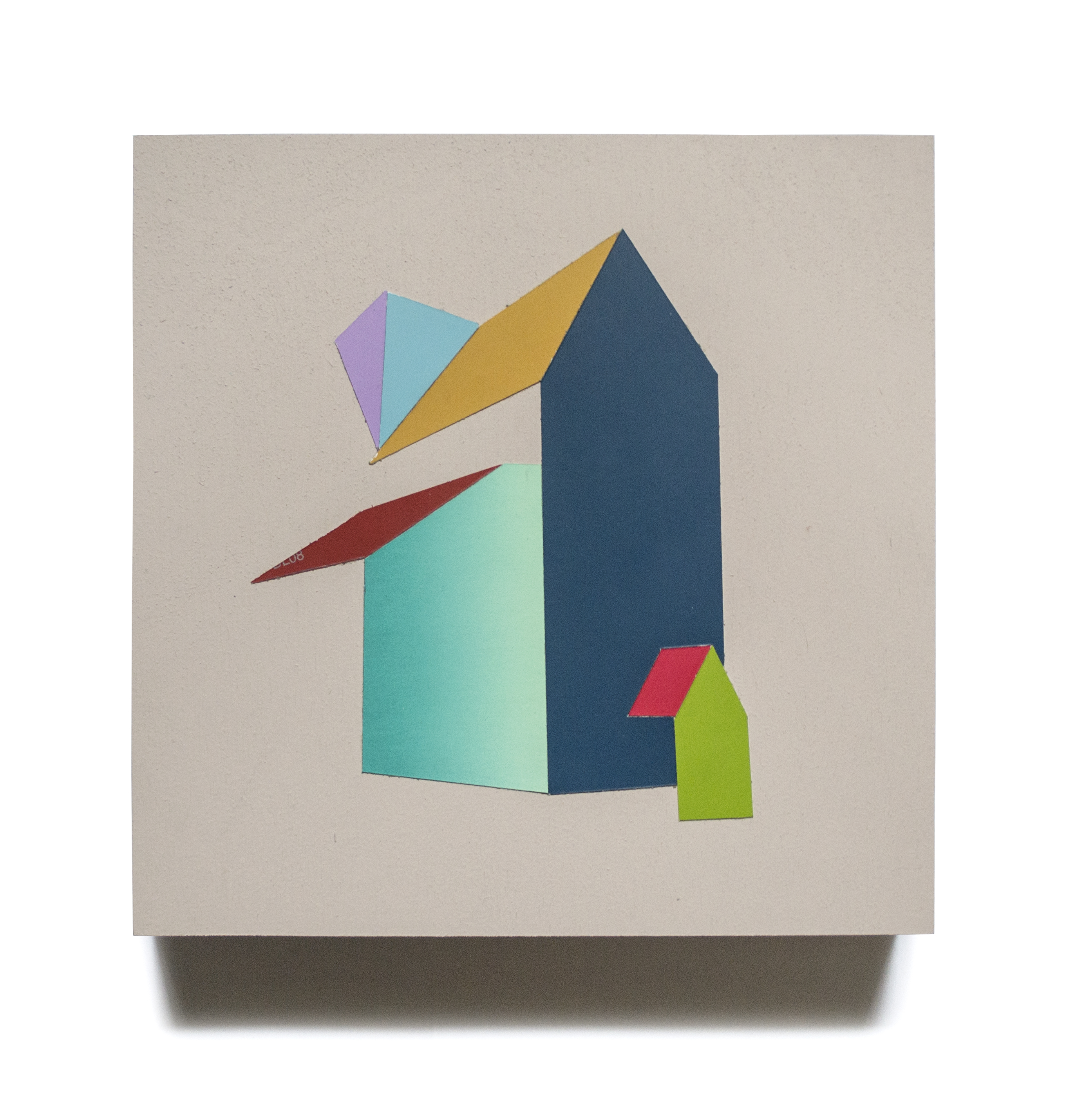
And they’re mixed media [paint and paper collage with applied text on wood panel]. What’s the process?
The bottom layer is house paint, just like Home Depot. For these works I actually made my own paint chips, by hand-rolling the paint and spreading it, and cutting them out. The words were also hand-transferred. But I’ll often, in other series, just incorporate the paint chips that you get at Home Depot. I like to have a little bit of the commercial and the handmade together. I think it’s a nice contrast.
And what about the size of these works?
These are the smallest that I have; I’ve also worked really, really big. I like to go really small or just massive. The small invites you to lean in, it takes it out of scale, and then when it’s so big you have to sit back to take it all in. I like the dynamic of both and how you respond oppositely to the different scales, I like playing with that a lot.
Tell me a little about the work we’re looking at.
This is a new series that I’ve started. I dove back into the world of painting, which is exciting, after doing some more paper-based and installation work in the past year. That work is about the past and memory and I’m still really interested in that, but I’ve kind of shifted gears into thinking more about the future, and what does that look like for myself, and the Newfoundlander? To be very romantic about it, I’m thinking more about the idea of a dream home, what that might consist of. Just kind of playing with that concept, and I’m not exactly sure how that’s going to develop yet.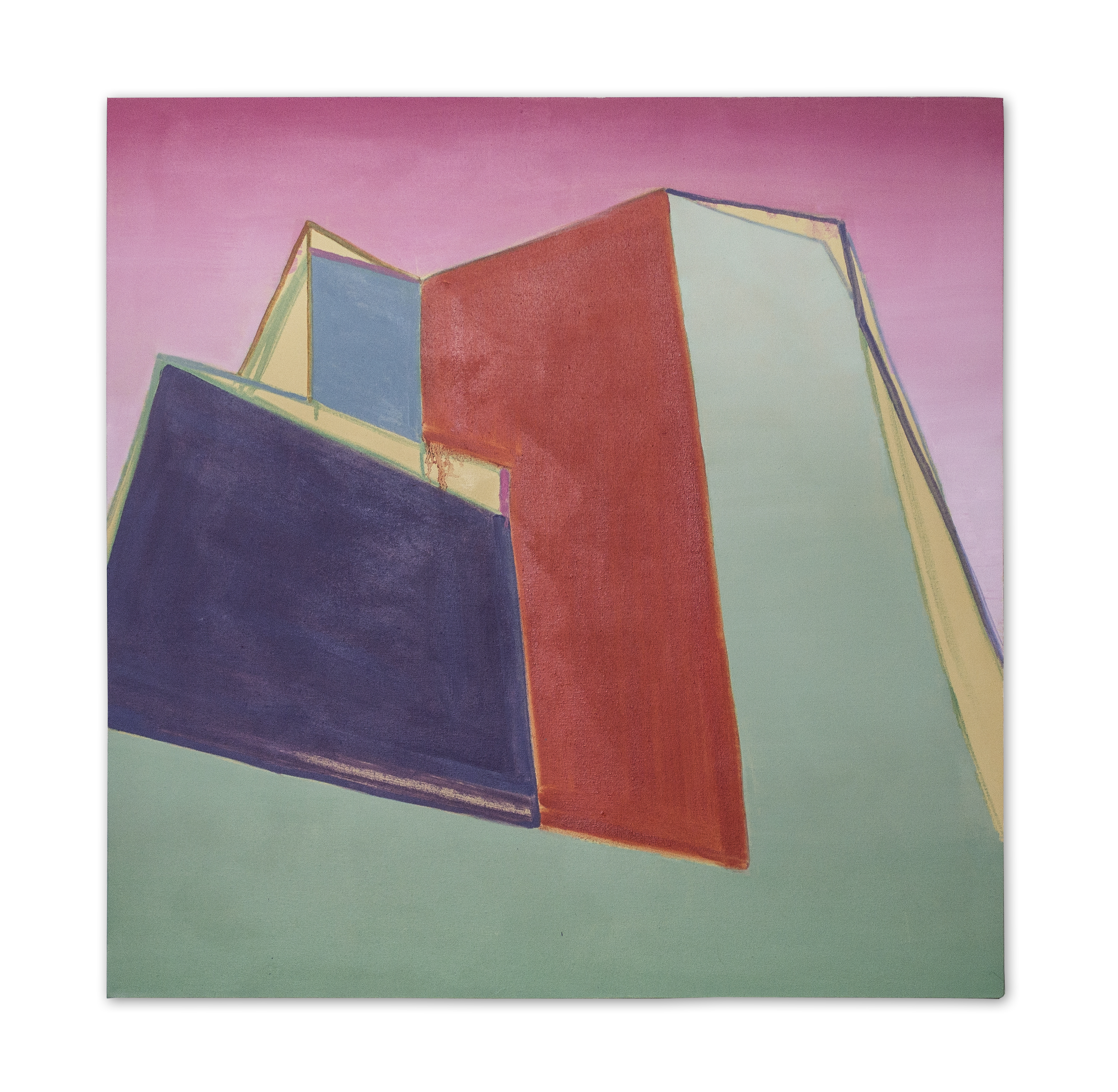
Why architecture at all?
That’s a great question. It kind of turned into an obsession that I didn’t really anticipate. I think that I started doing it, just playing around with the form and the colour and the possibilities of abstraction that it gave me, but the more and more I did it the more and more I realized that it’s really tied to feelings of identity and feelings of connection to place and mostly my own idea of how I fit into a place and call it home. For me, houses and architecture is irreplaceably tied to that idea, you can’t separate them.
And what stage is this painting at?
This is very, very unfinished. The first layer that went down is the yellow, which offers the glow, which I really like, I try to do a base colour that really comes through. And then this is something new that I’ve been playing with in my painting, the really crisp lines that I used to get with paper. I’m trying to see if I can make it happen in a painting as well. And then after I had played around with that I went back in with this turpentine wash, and I would say that is the third of maybe ten layers.
So how long will that take you?
Well it’s oil paint so the process has to be slow, because it had to dry between two different layers. I’ll probably play with a painting on the wall for about a month. And then I’ll re-evaluate: is this working?
Can we talk about your love of literature, too? You mentioned that you studied at Guelph, because there you could do a BA, not a BFA, which wouldn’t have allowed you to pursue both disciplines.
I did a double major in Studio Art and English. That started as a love of literature, I couldn’t decide between both when I went into school because I love them both so strongly. Since I’ve graduated it’s mostly transformed into writing about art, which has been helpful for my art practice, and my writing practice. They feed into each other.
And what do you read?
Since I’ve moved back to St John’s, I’ve been trying to re-orient myself with a lot of literature that I missed when I was away. All the big names: Lisa Moore, Michael Crummey. Megan Coles has a book coming out [Small Game Hunting at the Local Coward Gun Club] that I’m really excited to read.
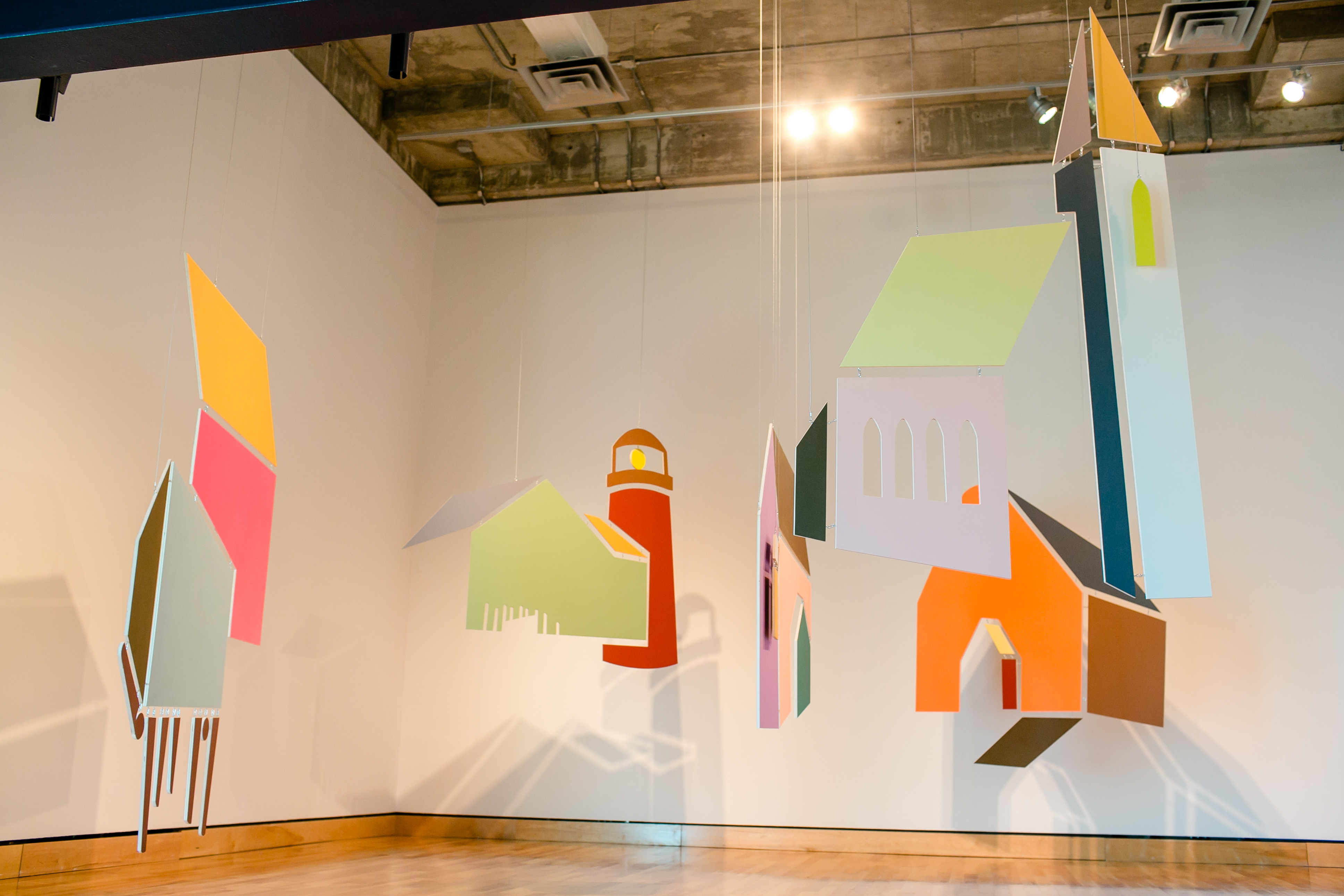
Unsettled
Installation image
The Rooms Provincial Art Gallery
Photo by Maria Hillier
Pittman will have an exhibition of smaller works in the English Harbour Arts Centre, opening early this summer. She is represented in St John’s by Christina Parker Gallery.

